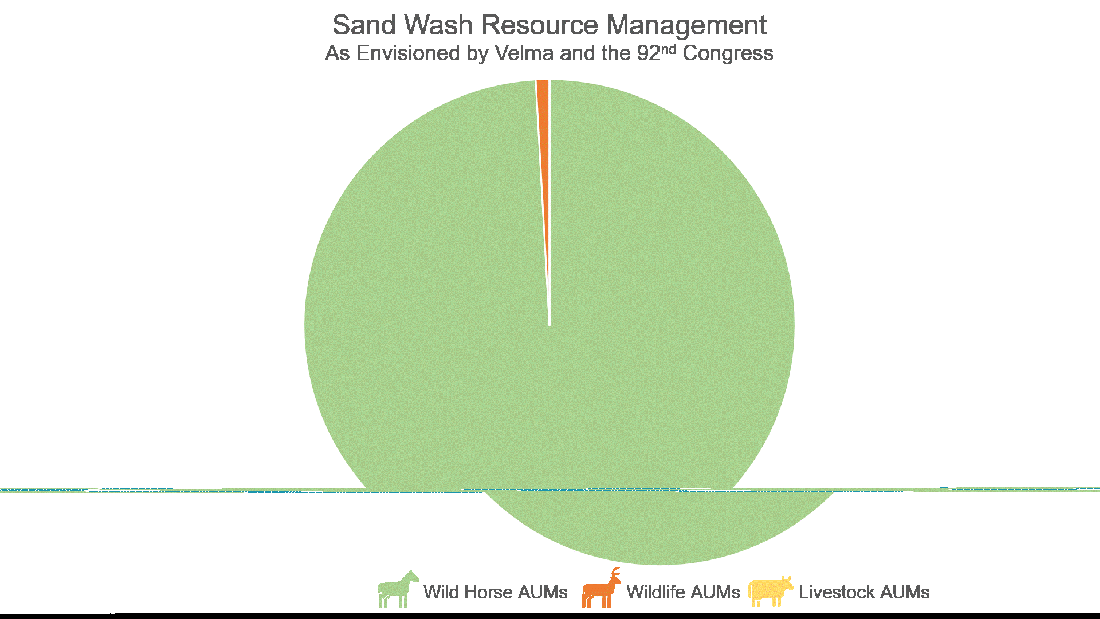The statement last week by the BLM that the AML for Sand Wash Basin represents the carrying capacity of the land was false.
If an HMA is subject to permitted grazing, the carrying capacity will be higher.
Same for WHTs.
Sand Wash Basin covers 156,502 total acres, according to the 2022 HA/HMA Report, including 151,435 public acres.
The AML is 362.
The 362 horses allowed by plan, the correct interpretation of the term, require 4,344 AUMs per year, or 28.7 AUMs per year per thousand public acres.
The stocking rate allowed by plan is 362 ÷ 151,435 × 1,000 = 2.4 wild horses per thousand public acres.
The National Data Viewer shows four allotments that overlap the HMA: Lang Spring, Nipple Rim, Sheepherder Spring and Sand Wash.
The allotment boundaries deviate slightly from the HMA boundary and roughly half of Nipple Rim extends beyond the HMA, but the forage assigned to livestock inside the HMA—the reason why AMLs are not synonymous with carrying capacities—can be estimated on a per-acre basis.
The Allotment Master Report provides acreage, management status and active AUMs.

Approximately 98% of the public acreage is in the Improve category.
The forage assigned to livestock would support 117.6 ÷ 12 = 9.8 horses per thousand public acres, on top of the 2.4 allowed by plan, despite claims by the BLM that public lands in the western U.S. can only support one wild horse per thousand acres (27,000 animals on 27 million acres).
There are three layers of forage demand across the HMA: Horses, livestock and wildlife.
Livestock receive 117.6 × 151,435 ÷ 1,000 = 17,809 AUMs per year per year inside the HMA, enough to support 17,809 ÷ 12 = 1,484 wild horses.
The horses receive 4,344 AUMs per year as noted above.
The forage assigned to wildlife is not known but is probably around 200 AUMs per year.
These figures are presented in the pie charts below.
The estimated carrying capacity is 362 + 1,484 = 1,846, the True AML, to be achieved by confining the ranchers to their base properties in a rear-round off season.
The Sand Wash Advocates beat the horse population down with their favorite pesticide so livestock can access most of their food.
The Wild Horse Fire Brigade would ship them to a remote wilderness area, never to be seen again, so livestock can access all of their food.
The 2021 roundup took over 600 horses off the range. The pre-gather population was 896, well within the carrying capacity of the HMA.


